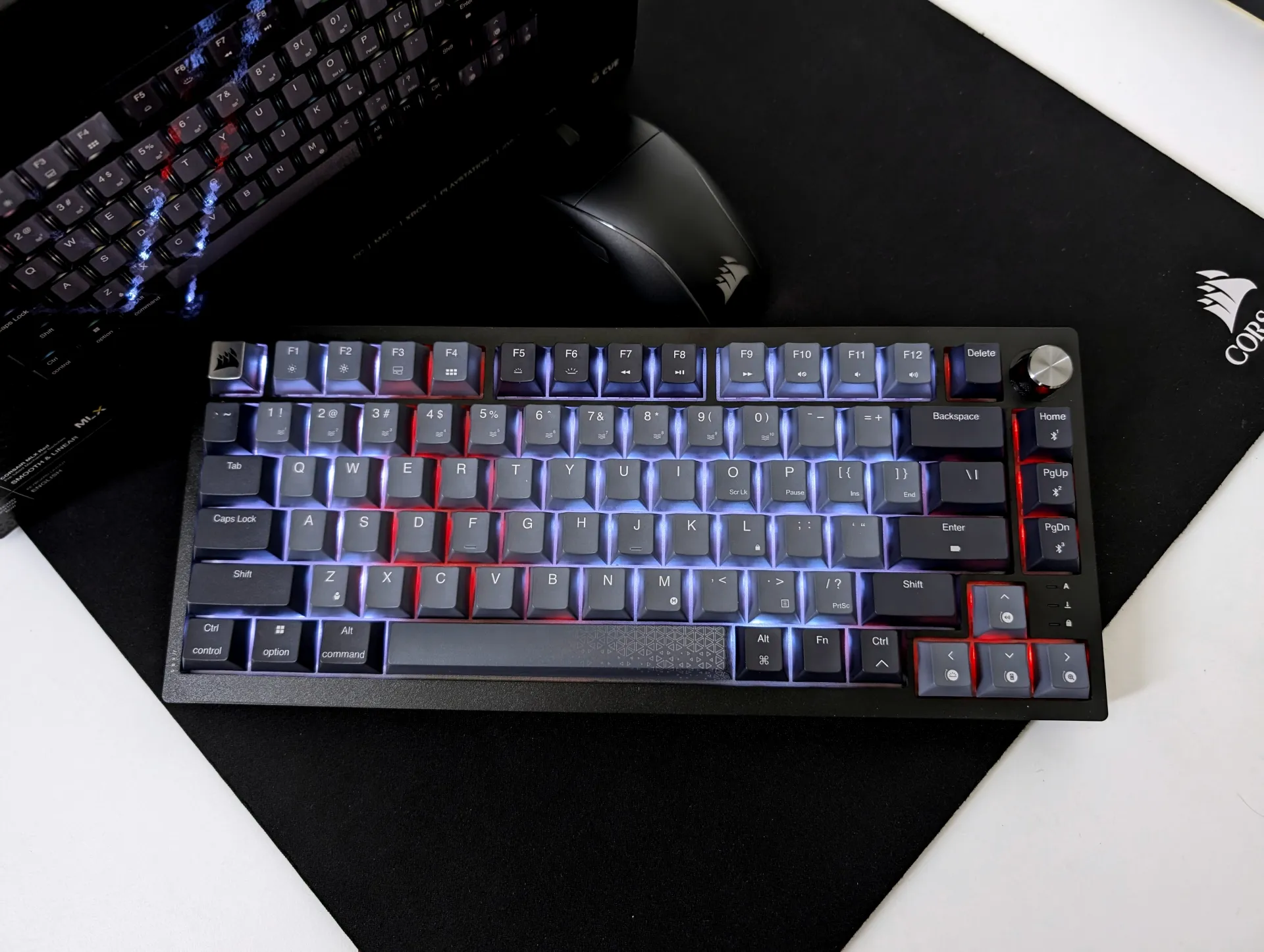A Key factor
As mentioned a couple of times, Corsair K65 utilizes MLX Red switches, similar to the ones in the K70 Core, known for their high quality and pre-lubricated mechanism. These switches are attached to a robust steel plate, which might be the reason behind the slightly amplified sound during typing. A foam layer is strategically placed under this steel plate, with an additional silicone pad nestled between the PCB and the keyboard's outer plastic shell, enhancing the typing feel.
The decision to opt for a plastic case could have been driven by factors such as cost efficiency and the potential impact on wireless signal strength. A hybrid design employing both plastic and aluminum could offer a visually appealing and practical solution.
The K65 offers a smooth and responsive typing experience, although the key travel is slightly longer than in some other models, and there's a slight wobble in the keys due to the traditional cross stem design without external support. The stabilizers under keys like the space bar are effective in minimizing noise and movement.
The keyboard's compact layout, excluding a numeric keypad and featuring a reduced-size right shift key, may necessitate a period of adaptation for new users. Its 75% layout may not meet everyone's needs.
When it comes to gaming performance, the K65 Plus stands out, supporting polling rates up to 1,000Hz in both wired and wireless configurations, catering to the needs of most gamers.
The keycaps are designed with a slight texture and require 45 grams of force to activate, making them suitable for a wide range of gaming styles.
While the Corsair MLX switches are of notable quality, they might not be the first choice for every user, especially when compared to custom switches from brands like Razer or Dell. However, the keyboard does offer the flexibility to change switches to suit individual preferences.








